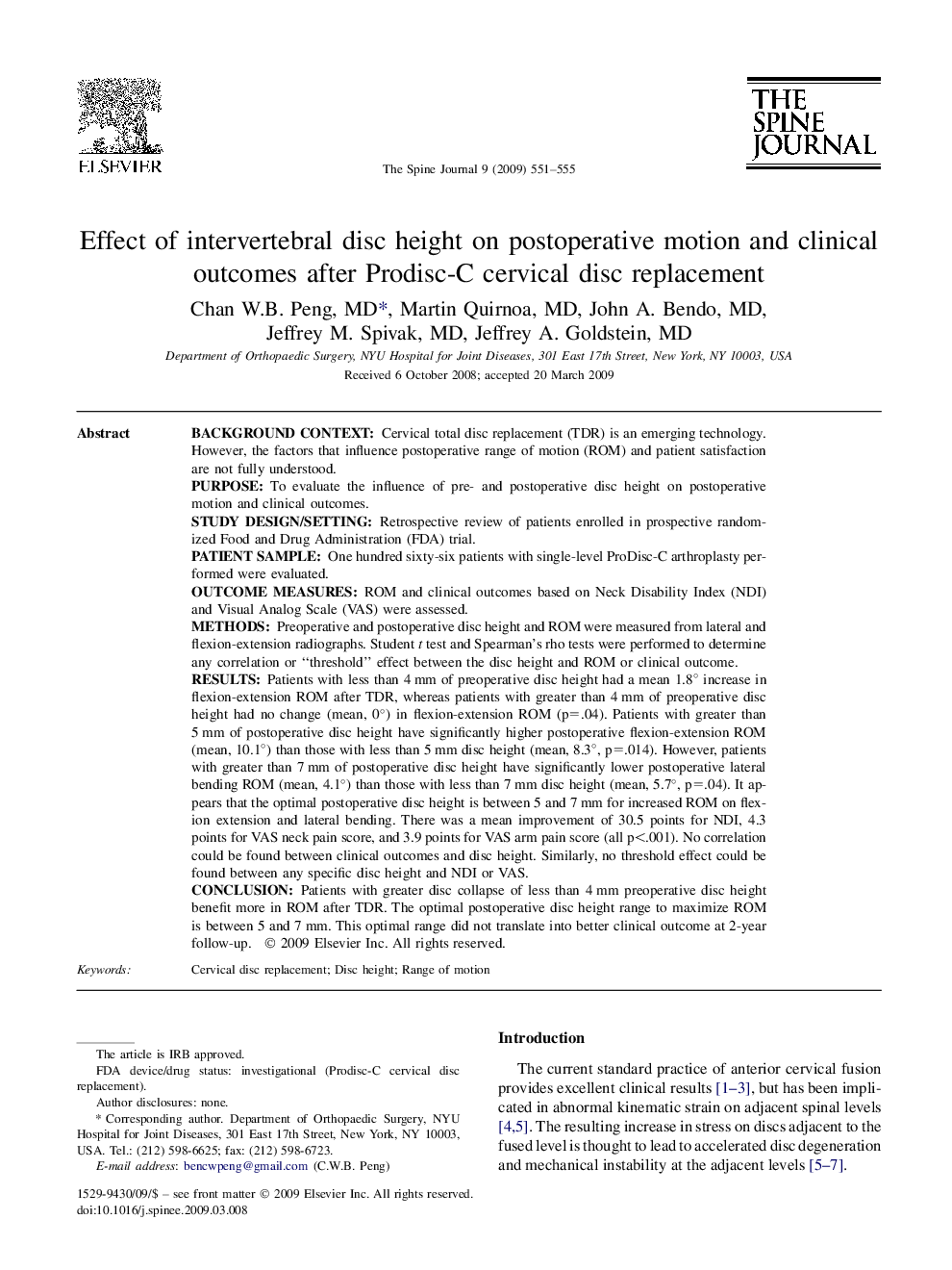| کد مقاله | کد نشریه | سال انتشار | مقاله انگلیسی | نسخه تمام متن |
|---|---|---|---|---|
| 4099590 | 1268645 | 2009 | 5 صفحه PDF | دانلود رایگان |

Background contextCervical total disc replacement (TDR) is an emerging technology. However, the factors that influence postoperative range of motion (ROM) and patient satisfaction are not fully understood.PurposeTo evaluate the influence of pre- and postoperative disc height on postoperative motion and clinical outcomes.Study design/settingRetrospective review of patients enrolled in prospective randomized Food and Drug Administration (FDA) trial.Patient sampleOne hundred sixty-six patients with single-level ProDisc-C arthroplasty performed were evaluated.Outcome measuresROM and clinical outcomes based on Neck Disability Index (NDI) and Visual Analog Scale (VAS) were assessed.MethodsPreoperative and postoperative disc height and ROM were measured from lateral and flexion-extension radiographs. Student t test and Spearman's rho tests were performed to determine any correlation or “threshold” effect between the disc height and ROM or clinical outcome.ResultsPatients with less than 4 mm of preoperative disc height had a mean 1.8° increase in flexion-extension ROM after TDR, whereas patients with greater than 4 mm of preoperative disc height had no change (mean, 0°) in flexion-extension ROM (p=.04). Patients with greater than 5 mm of postoperative disc height have significantly higher postoperative flexion-extension ROM (mean, 10.1°) than those with less than 5 mm disc height (mean, 8.3°, p=.014). However, patients with greater than 7 mm of postoperative disc height have significantly lower postoperative lateral bending ROM (mean, 4.1°) than those with less than 7 mm disc height (mean, 5.7°, p=.04). It appears that the optimal postoperative disc height is between 5 and 7 mm for increased ROM on flexion extension and lateral bending. There was a mean improvement of 30.5 points for NDI, 4.3 points for VAS neck pain score, and 3.9 points for VAS arm pain score (all p<.001). No correlation could be found between clinical outcomes and disc height. Similarly, no threshold effect could be found between any specific disc height and NDI or VAS.ConclusionPatients with greater disc collapse of less than 4 mm preoperative disc height benefit more in ROM after TDR. The optimal postoperative disc height range to maximize ROM is between 5 and 7 mm. This optimal range did not translate into better clinical outcome at 2-year follow-up.
Journal: The Spine Journal - Volume 9, Issue 7, July 2009, Pages 551–555